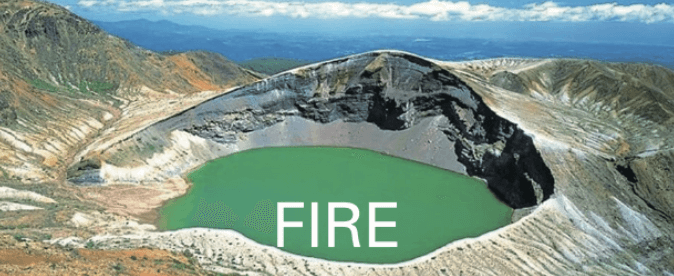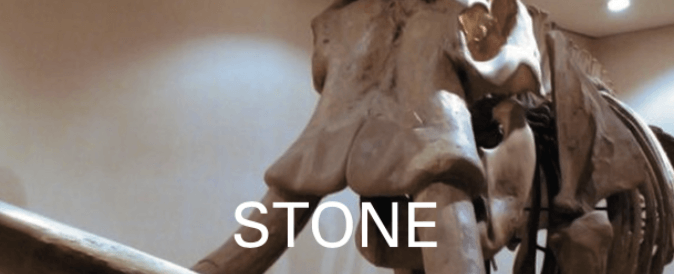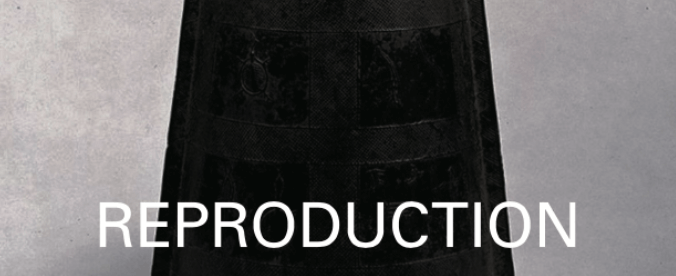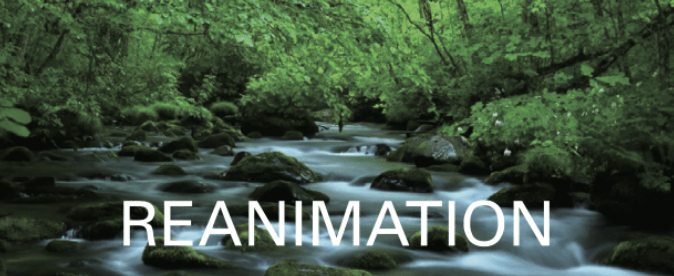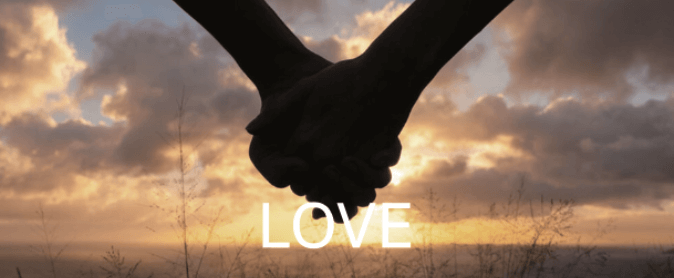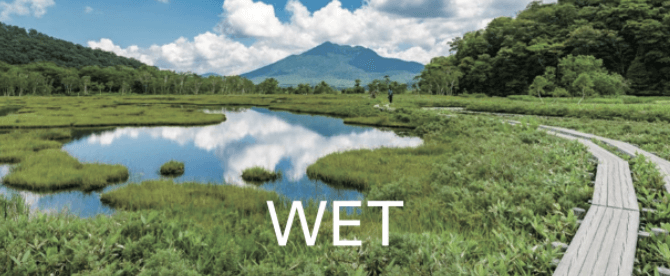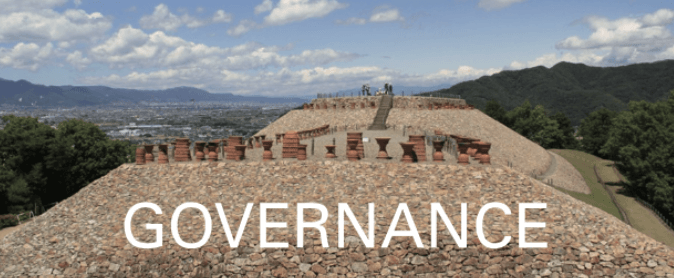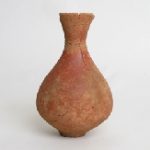
“You see Japanese ancient periods to come across” -There are many relics excavated from ancient sites in Izu peninsula, where you see the remains for the Jomon and the Yayoi period to come across. This peninsula used to be the nodal points of east-to-west and the ancient periods. This center is the representative academic facility at this peninsula.
This center displays pottery with various marine life patterns and shapes from the Jomon period (16,000 years ago – 3,000 years ago), beautiful pottery vermilion-lacquered in the Yayoi period (the 4th BC – 3rd century), and colorful gems in the Tumulus period (the 3rd– 7th century). It Introduce the items excavated from Ito city from the Paleolithic period to the modern times, along with trade porcelain that conveys the prosperity of the Ito Clan from the end of ancient times to the beginning of the Medieval Ages.
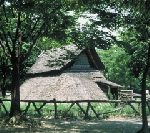
“You see the Japanese farming style during the Yayoi Period” -These are Yayoi period settlements from the 1st Century, on a slightly elevated area, created by the gravel of the Abe River, which was used to develop and cultivate arable lands. Unglazed earthenware with Jomon Patterns were also excavated. Jomon culture and Yayoi culture were layered, which is the Japanese style.
At the Toro site, the remains of houses, raised floor warehouses, and paddies were found. And Woodworking products, stoneware, and Koto, vermilion lacquered Japanese harps, were excavated.
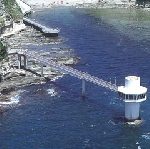
This Park is located at the scenic Rias coast, in beautiful Ubarachisaki of Katsuura City. In the central part, there is the largest undersea observation tower in the East. You can see many fish, each season, and the mystery of the sea at the junction of cold and warm currents.
In the river basin on the Pacific sea side of Boso Peninsula, shell mounds and round wooden boats from the Jomon period (16,000 years ago – 3,000 years ago), were excavated.
Unlike on the ground, the undersea has not changed from 5000 years ago.
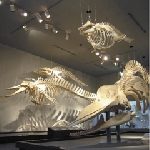
This is a general museum with the theme of ” Chiba’s natural and human history”. This museum introduces earth science, living organisms, oceans and history of Chiba prefecture, using a huge skeletal specimen including Naumannou, video image, reproductions of Buddha statues, and others.
In the adjacent “ecological garden”, you can observe animals and plants in the wild bird observatory. And in the classified exhibition room, you must see the skeleton specimen of the huge sperm whale, the “king of the sea road.”

“Ancient Elephants came to Japan from the Eurasian Continent” -Here, you will come to know the history of the earth, during its 4.6 billion years, and of the Japanese Islands that have sunk down and floated up over the past 15 million years. During the most recent Ice Age, up until 10,000 years ago, these Islands connected to the Eurasian Continent. Large animals such as Palaeoloxodon naumanni came from there and humans followed them. That is when the Japanese Paleolithic Age started, around 40,000 years ago.
This museum introduces the natural history of Kanagawa Prefecture, such as the 100 million years old sandstone and slate stratums near Sagami Lake and Tsukui Lake, and the collision between the Izu Peninsula and the Tanzawa Mountains about 1 million years ago, along with the 4.6 billion years of activity of the earth.
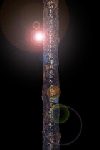
The Saitama group of ancient mound tombs consists of eight large keyhole-shaped mounds and one large circular mound.
The Inariyama shrine, built before the tombs, has contains a national treasure gold damascening Sword “Kinsakumei Tekken”, inlaid with 115 letters, stating“ I am the 8th descendent of Owake Shin and I served as the captain of the Guard for the Yuryaku Emperor” were inlayed.
This national treasure symbolizes the influence of the Yamato sovereignty in the latter part of the 5 Century. This museum exhibits this national treasure in a case filled with nitrogen gas.
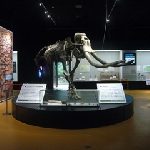
“The Elephant and the Man from Hamana Lake” -You will find the fossil of Palaeoloxodon naumanni, from 200,000 years ago, excavated at Hamana Lake and the replica fossil of Hamakita man, from 16,000 years ago, excavated at the Negata site in Hamakita. Lakes and marshes were a great life support system. This museum is next to the Jomon Shell Mound, from 4,000 ‒ 3,000 years ago.
The permanent exhibition introduces tens of thousands of years of history in the Hamamatsu area. After the formation of the Japanese archipelago, the plateaus and valleys of Mikatahara were formed by the sediments from the Tenryu River 400 to 500,000 years ago, when volcanic activity was active. Eventually, elephants and then people came.
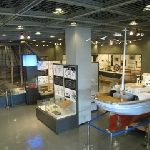
The Oigawa Plain, where rice fields were cultivated and spread, dotted with forests and lakes and small rivers flowed like a net, began to be developed 2000 years ago. Yaizu City has a connection with the tradition to conquer the eastern area in Japan by Yamato Takeru, a prince of Emperor Keiko, a hero in ancient Japan. And this place used to be a transportation hub, which connected the center and the regions.
This museum exhibits excavated items from the ruins, from the Yayoi period (4th century BC – 3rd century) to the Muromachi period (1336 – 1573), and tells the history of Yaizu, which flourished as a transportation hub.
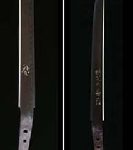
“Discover this 10,000 year old sacred place!” -This museum neighboring the sacred area of Hikawa Shrine, is in the Omiya Plateau. Lakes and marshes around here were good locations for the development of rice paddies and for managing irrigation in ancient Japan. The relics show the ancient, rich nation state in Saitama.
The area where the Jomon and Yayoi culture spread over 10,000 years ago, was the center of Keno Province in the Tumulus period (the 3rd– 7th century), and the center of Musashi Province in the Nara period (710 – 794). In the Medieval ages, the Musashi samurai group appeared here and developed up the hillock of North Musashi.
This museum introduces the history of Saitama, which was the development of the Five Kaido Road from Edo (Tokyo) in the early modern times. It overlaps with the history of Musashi samurai group of North Musashi.
The museum’s collection includes the National treasure, a sword from the Kamakura period (1185 – 1333), and the folding screen drawing of the Battles of Genji clan and the Heike (Taira) clan in the the Edo period (1603 – 1868).
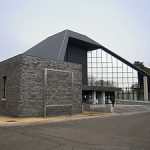
Watanuki Kanon Yama Tumulus Excavated Articles are listed as National Treasure. This group of human-shaped clay figures are holding their hands in front of their chest, with their fingertips bent so that they could play. It is presumed that they performed the same role in ceremonies. In Kozuke Province, Gunma , a coalition of powerful families formed and made an alliance with the Yamato Kingdom, in the 4th -7th centuries
This museum introduces the ancient Gunma, Kozuke Province, which was one of the most powerful Provinces in East Japan, through cultural assets excavated in the prefecture, such as these clay figures.
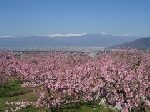
This city that faces the mountains is the place where the Jomon period Clay Figure was founded and boasts the highest peach production in Japan.This city is also called Togenkyo, paradise on earth. Because the alluvial fan which spreads across on other side of Fuefuki River to flow through the center of the city, is stained pink with peach blossoms.
At the beginning of April, peach blossoms bloom all at once, and you can see a landscape of pink carpet with the back drop of the Southern Alps.

The area of the hill in the description of Nasu Fudoki, the Japanese regional climate, culture, and others, is located at the junction of the Nakagawa River and the Hokigawa River, in the northeastern part of Tochigi Prefecture, where are many big tombs. The government office and agency was here, during the Nara period (710 – 794). Nasu was the base for the Mutsu Province, where Tosan-do Road, an ancient division of the country and the main road running through it, was situated along the central mountains of northern Honshu.
This museum introduces the construction and discovery of the inscription of Kuni no Miyatsuko, the regional administrator of the Nasu Province, which was made of granite and has a 152-character inscription honoring the achievements of Natsu Kuni no Miyatsuko. It helps us trace the establishment of Nasu Province by the Yamato Kingdom.
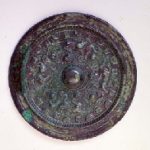
The area of the hill of Nasu Fudoki, a description of Japanese regional climate, culture, and others, is located in the northeastern part of the prefecture, near where the Nakagawa River and the Hokigawa River meet. There are many large-scale tumuluses remains. Nasu used to be an important base toward Mutsu Province, Tohoku region, where there was a government office and agency and Tosan-do Road, situated along the central mountains of northern Honshu, Tohoku region, passed through, in the Nara period (710 – 794).
This museum introduces the transition of ancient Nasu culture. It is said that powerful families built tumuluses in Nasu, had strengthened their ties with Yamato Kingdom, from the 4th – to 7th centuries, and formed the coalition of powerful families.
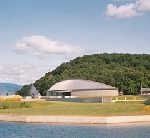
“Devises against Giant Animals” -The Iwajuku Site, dating back to the Paleolithic age, 30,000 years ago, was excavated from the Kanto region’s loam layer. In those days, both the Ice Age and volcanic activity took place.
This museum guides visitors about man’s encounters with great deer and mammoths, thru the relics of stone implements.
In 1949, Aizawa Tadahiro (1926 – 1989), a Japanese independent archaeologist who was the first to discover Japanese Paleolithic artifacts, discovered a stone spear of obsidian from the Kanto region with a layer of loam, red soil stratums. It used to be thought that humans could not live in the volcanic ash strata more than 10,000 years ago.
They were unknown strata in Japanese Archeology. With the challenge of Aizawa, the Paleolithic culture of 20,000 to 30,000 years ago became clear, and it became known as the Iwajuku Period.
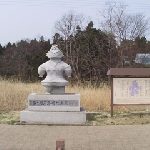
Historic Kamegaoka Site
“This Wetland site preserved the culmination of Jomon molding” – This was a settlement in low-lying wetlands during the final Jomon period, 3,000-2,000 years ago. Goggle-eyed clay figurine, and excellent artistic relics of lacquered pottery have been excavated. These provide a clear insight into the essence of Jomon culture and its roots in nature and art.
In addition, pit graves and dwelling sites were found in the hills. Along with the wide-area maritime network, the excavated Goggle-eyed clay figurine, nicknamed Shakochan and earthenware had affected the entire archipelago, from the center of Hokkaido Island to the northeast region of Honshuu Island.
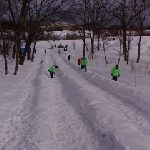
“Representing the Jomon sites of Japan” – This site was a long-term settlement during the early to middle Jomon period, 5,900 to 4,200 years ago. The remains of many pit dwellings, pillar-supported buildings, and other items show how people lived in this settlement.
There existed a system and an idea for maintaining a large settlement. Excavated jade beads and obsidian tools show that trade occurred with far off regions of the Japanese islands.
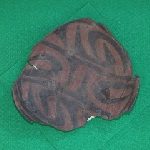
This museum exhibits the head of a female Clay figure with Yuiage, her hair tied up. The pitcher has been colored with a red pigment, has a liquid spout, and indigo lacquerware. Dish-like objects contain a red lacquered pattern, were knitted with bamboo, bark, etc., and pasted with linen. Creating life with the dynamics of nature. The lacquer culture and the wisdom of the Jomon people will surprise you.
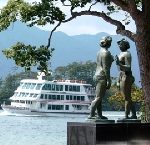
Lake Towada is a double caldera lake formed by an eruption. In the vicinity of Lake Towada, cold temperate zone forests of Beech and a subarctic zone forest of Belula armanii spread, and wild animals, such as the mountain hawk-eagle, golden eagle and Japanese black bear are inhabited. There is an ancient life cycle still present. Lake water flows only from the Okuirase River.
A pleasure boat that operates gracefully in Towada Lake every season, and you can enjoy the splendid and sensitive Lake Towada’s exquisite scenery.
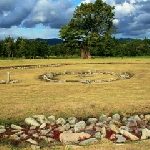
“The circles consider the sun’s movements” -This site, from the later Jomon period, 4000 years ago, features two stone circles, each of which is surrounded by the remains of pillar-supported buildings and dumping grounds concentrically arranged. This formation required labor-intensity and a strong spirit.
The museum introduces earthenware, clay figure, and bell-shaped earthen products, excavated from the site of the Oyu Stone Circle, and conveys prayers for ancient death and rebirth, and festivals. You can see the world view in a circular or concentric shape that is not linear nor planar.
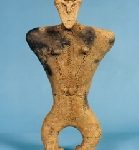
The port of Noheji used to be connected to Osaka by the Kitamae-Bune, a Japanese freight vessel during the Edo era (1603-1868). This museum, which introduces the history of the port, features cultural assets that have been connected to the Jomon period for more than 10,000 years.
A 5,500 year old, early Jomon period wooden bowl used to have a spiral shell decoration, hollowed out of Konara oak and coated with red lacquer. “Clara,” a 32cm tall, latter Jomon Clay figurine, with an inverted triangle body, and other objects are exhibited.

“These lakes and marshes are a great landscape for human life” -This museum is in Misawa City, at the park by Ogawara Lake. Here, you can see Knife-shaped stones from the Paleolithic period 20,000 years ago, clay figures from the early Jomon period, 9,000 years ago, and Lacquered pottery from the final Jomon period, 3,000-2,000 years ago!
This museum is located on a plateau overlooking the mysterious Adanuimuma Lake and marshes adjacent to the Ogawarako Lake, which is the largest lake in Aomori Prefecture. You can observe wild birds and plants, as well as seeing Jomon clay figurines excavated from shell mounds near marshes and wetlands. People started living on the plateau of Misawa City about 20,000 years ago.
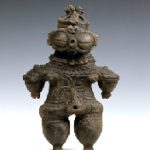
“A museum on a hill, with a great view of Mt. Iwatesan” -Mt. Iwate has been worshipped. This museum exhibits a Goggle-eyed clay figure, from the final Jomon period, 3,000-2,000 years ago. The figure used to be painted Indian red, to keep away evil spirits. The mountain and figurine bring good fortune!
The museum exhibits materials such as geology, archeology, history, folklore, and animate nature from the geological era to the present day. On a clear day, you can see the beautiful Mt. Iwate from the second floor of the museum. The beauty overlaps the Goggle-eyed clay figure, which was excavated from the Teshiromori Site in Morioka City and was restored in almost complete form.
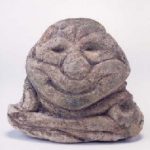
The smiling stone figure from the last part of the Jomon period was excavated at a site on the river terrace, along the meandering Ani River, a tributary of the Yoneshiro River. It is 6.9cm high and made of soft stone tuff. The figurine was excavated from inside a groove that divided the interior and exterior of the settlement. Clay figures and earthenware for rituals were excavated together.
Currently, it is exhibited at the Jomonkan, located at the Isedoutai site of the late Jomon period, 4000 years ago. The Isedoutai site is mainly composed of stone circles, which used to be a special prayer place.
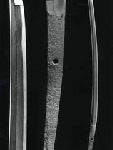
At this location, Mokusa swordsmiths made the original curved, Japanese swords in Ancient Ages.Visitors to the museum can learn about the area’s historical figures, including the Mokusa swords; the Kasai clan, who served as vassals to the Kamakura・Muromati shogunate in Medieval Ages; and the Tamura clan, who were lords of the Sendai domain in the early modern times.
There is also information about the Otsuki family and, in particular, Gentaku Otsuki, who played a critical role in the advancement of medical Kaitai Shinsho (1774). It was translated from the original Dutch book, Anatomische Tabellen.
The museum also has exhibits about Chusonji temple manor, Honederamura Village, which financially supports and sustains the repository of the national treasure, Konsikinji Issaikyo, the national treasure of decorative sutras, written in gold paint on navy paper.
Honederamura Village has an aesthetic beauty – with its agricultural roads, irrigation canals, and levee ridges – to achieve harmony with the surrounding, undulating topography.

Amber was a fossilized resin of trees roar flourished tens of millions to hundreds of millions of years ago. It was buried in the sand. Kuji Amber is a tree species that originated from the Hoop pine of the southern sea, during the age of the dinosaurs, about 85 million years ago.
Kuji Amber is the oldest in the world, carried from the South Sea by the crustal movements of ancient times. Fossils of insects and feathers were discovered in the amber, and fossil DNA researchers are also paying attention to Kuji Amber. It is like the movie “Jurassic Park”.
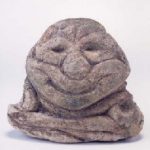
“Jomon culture warms your heart!” – This museum is at the foot of the plateau of the Historic Isedotai Site from the later Jomon period, 4000 years ago, where four stone circles were . Guides to the Jomon festivals in the circles are provided to visitors. A Smiling Stone figure excavated in the Shirazaka Site from 3,000-2,000 years ago waits for you.
The site is located on the river terrace where the narrow Anigawa River meanders like an S. It is a tributary of the Yoneshirogawa River. The Smiling Stone figure was found at the site of settlements in the late Jomon period, 3,000-2,000 years ago. It is 6.9 cm high and made of soft tuff.
The Smiling Stone figure was excavated from the inside of a groove that divides the interior and exterior of the settlements. The clay figures and earthenware used for rituals are also excavated.
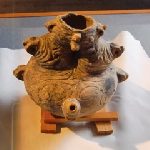
Higashine, along the Mogami River, has a history of safflower merchants that brought items of Kyoto and Edo culture, like Hina dolls, small dolls displayed at the Girls’ Festival. These merchants traded the high-priced Yamagata safflowers in Kyoto and Edo, during the Edo era (1603-1868).
This museum introduces the history and culture of Higashine city and exhibits the irregular-shaped, spout-mouth earthenware from the Jomon period (13,000 – 2,300 years ago). It conveys the importance of the Japan Sea network, which has connected East and West Japan since ancient days.

Shirakawa City is a castle town that retains its history and many cultural properties. The Shirakawa Yuki clan influenced the south of Oshu (Northern Honshu, the region encompassing Mutsu and Dewa province), in the Medieval Ages. Shirakawa became a castle town of 100,000 koku, a unit of volume of rice, and the culture of common people flourished in the early modern times.
This museum introduces the history and culture of Shirakawa. It also introduces materials related to Kominejo Castle, and exhibits jade from Niigata Prefecture, obsidian from Tochigi Prefecture, and pottery from Tohoku and Kanto, excavated from archeological sites in the Jomon period (16,000 years ago – 3,000 years ago).
This museum tells the history of the place connecting with Oku no hosomichi, the Narrow Road to the Deep North, the major text of poems and essays, written as a travel journal, by Matsuo Basho.
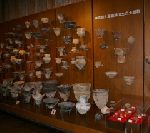
This center utilized an old Otaru warehouse, designated as a historic building. This building is representative of the existing timber-framed stone warehouses in Japan. In the exhibition room, lacquered combs, earthenware, stoneware, etc., excavated from the Oshorodoba ruins, a meadow site in the late Jomon period, 3,500 years ago, are displayed. Otaru is a place where the culture of post Jomon ( 3rd century BC – 7th century) and the southward northern culture, overlapped.
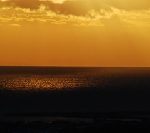
The Uchiura Bay is surrounded by the Oshima Peninsula in southwestern Hokkaido. Date Volcanic bay was named in 1796 by a British investigative team, seeing the bay surrounded by Mt. Hokkaido Komagatake and Mt. Usu. Salmon, squid, and flatfish are often caught in this bay, and scallop cultivation is popular.
In addition, the Kitakogane shell mound, from the Jomon period (16,000 years ago – 3,000 years ago) culture, and the Usu-moshiri site from the post-Jomon period (the 3rd century BC– 7th century) culture are revealed. The culture of Date Volcanic bay is linked to the ancient Japanese archipelago.
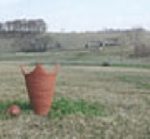
“All things are living. Shellmounds are not a garbage dump.”-During the early Jomon Period, 7,000-5,500 years ago, on the coast of Hunkawan Bay, there were shellmounds in the highlands and in watering-sites in the lowlands. Human skeletons have also been discovered here.
It shows the shellmounds were a burial ground for all. Kitakogane Shellmound, and it’s grave system, tells us about environmental changes and human adaptation to those changes at that time.
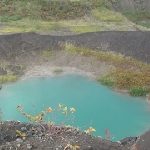
The Toyako Lake, which Ainu people call mountain lake, is a caldera lake made by the eruption of Toya 100,000 years ago. This local visitor center exhibits the structure of the lake. The Volcano Science Museum introduces the history of the eruption of Mt. Usu.
The acidity was increased by mining, hot spring drainage, and the construction of dams, and the lake lost its transparency.
However, through natural purification, the alkalinity of the volcanic ash from the eruption of Mt. Usu helped neutralize the lake water.
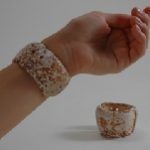
“Excavated Shell bracelets were traded from the South!” – Usu-morishi ruins are from the post Jomon period, 2000 years ago, along the Hunkawan bay. Excavated Cone Shell bracelets found here were the same as ones in Kyushu Island of southern Japan. This Jomon Art Gallery introduces the wide sea trade area in the ancient days.
You can feel the “beauty in life” by exhibiting various bone horn and shellfish products in the post-Jomon period (the 3rd century BC– 7th century). Even today, the Kanji, Chinese Characters used in written Japan language, for the word “shell” is also used to in the Kanji for treasure, money, savings, gifts!
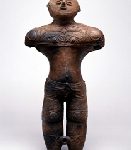
This National treasure, Chuku-Dogu, a Hollow Clay Figurine, 2000-1000 BC from the late Jomon period, is the largest Hollow Clay Figurine (height 41.5cm). Its hair was expressed in minute circles, and the whole body was skillfully decorated with extremely fine patterns. It is exhibited at Hakodate Jomon Culture Center.
The Jomon people continued to produce large amounts of cylindrical pottery, clay figurines, and ornaments in their daily lives. And the fact that they crossed the Tsugaru Channel is revealed from the excavated items in Hokkaido.
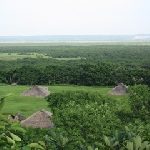
Hokuto Historical remains are located at the 20 meters’ plateau, overlooking the Kushiro Shitsugen Wetlands. That area is east to west 2,500m and north to south 500m. These remains overlap eras, spanning from the paleolithic age through the Jomon, Epi-Jomon, and Satsumon cultures. 10,000 years were overlapped. Shallow circular and elliptical potholes remain from Jomon and Epi-Jomon, along with square potholes from Satsumon cultures.
The museum displays everything from stoneware in the paleolithic age to ironware in Satsumon cultures, textile relics, some weaving tools and excavated seeds of cultivated plants.
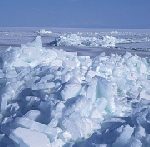
Around the end of every January, the Ryu-hyo ice drift travels 1,000 km from the Amur river in Siberia to the Sea of Okhotsk. When the fresh water of the Amur river flows and a thin layer of saline is formed on the sea surface, the sea water develops into a large ice drift.
In 1913, a Moyolo Shell Mound, which is different from the Ainu culture mound, was discovered in Abashiri city Hokkaido. Later, the fact became clear that these ruins are from the Sea Okhotsk connected by the Amur river.
The ice drift and the shell mounds became overlapped.

“Deep pot, Cylinder earthenware came!” -Cylinder earthenware created a cultural region by enabling the cooking of acorns and nuts. Here, you will discover the archaeological sites and artifacts from the migrations of the Paleolithic, during the initial of the Jomon period 15,000 ‒ 12,000 years ago, thru the end of Jomon period, 3,000 ‒ 2,000 years ago. Cylindrical earthenware was distributed from southern Hokkaido to northern Akita Prefecture and northern Iwate Prefecture across the Tsugaru Strait from the early part of the Jomon period, 10,000 ‒ 6,000 years ago, thru the middle Jomon period, 5,000 ‒ 4,000 years ago. Cylindrical earthenware conveys that there were active exchanges on both sides of the Tsugaru Strait. At this museum, you can enjoy the special exhibition in the special exhibition hall of the former Fifty-Nine Bank Aomori Branch.

“This place used to be connected to Siberia” -This site is at the mouth of the Abashiri River, where the northern people migrated 1,200-1,300 years ago. Relics related to the Tungusic people, along the Amur River, were excavated. An example is the bronze bell, a symbol of patriarchy.
Moyoro Shell Mound was discovered in 1913 and later it was found that this site was the remains of the northern peoples who intermingled widely in the Kuril Islands, Sakhalin, and the Amur River basin, and migrated to Abashiri in the Heian period (794 – 1185).
This museum conveys the ancient wide-area exchanges.
